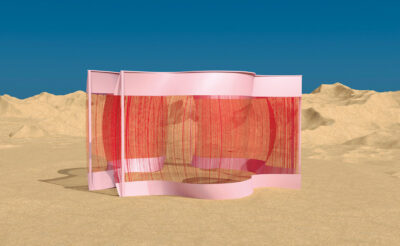In this series we spotlight the trailblazing paths of the Middle Eastern women raising the bar in sport, society and structure. Here, we conclude with Leila Araghian, recipient of the Aga Khan Award for architecture and powerful mind behind one of Tehran's most iconic structures, the Tabiat bridge.
Architecture in Iran has long been an anchor point for public gathering. During the 1979 revolution, Amanat’s Freedom Tower marked the meeting place of protesters and today, Daneshmir’s sweeping Pardis Mellat cinema is a space where young Persians like to hang out post-movie. The 2008 cinema, commissioned by Tehran’s Mayor, was perhaps the catalyst in a new wave of post- revolution architectural projects that have gained international acclaim; the 2014 Tabiat Bridge was the next. “I think it responds nicely to human needs both psychologically and physically,” says Leila Araghian, the young architect, whose inaugural project was the Tabiat or ‘nature’ bridge. “We have benches, green spaces and restaurants. The whole spaces are so complex and serendipitous that every time someone visits the bridge, they can experience it in a new way.”
The inspiration behind Tabiat goes back to 2004, when Araghian was walking with her business partner, Alireza Behzadi. “We were crossing a bridge on a small river in Tehran and we saw an old couch; we pulled it onto the bridge and sat on it.” It was at this point they realised a new perspective. An oasis amongst the heave of the traffic-choked city, the multi-level, 270-metre bridge curves and winds its way between two parks in north Tehran. In the two years since it opened, it has the overtaken the city’s other notable structures as a hub of congregation for the youth. “People are the most important element we must always have in mind during design,” says Araghian on her vision for the Iranian people’s latest point of contact. As with many artistic ventures, during the construction she experienced a great deal of criticism and mixed emotions from her community, but once it was opened tourists, runners and pedestrians alike started to make use of her dynamic space, the seating, like her sofa, encouraging them to linger and indulge in enticing conversation.
The whole spaces are so complex and serendipitous that every time someone visits the bridge, they can experience it in a new way
Leila Araghian
Beyond thoughts of structure and space, Araghian is deeply concerned with the environment, her bridge making a minimal impact on its surroundings. “Do we use our private car and contribute to the pollution or do we take a bike? How do we consume water or energy? These are all extremely simple, but important ways in which every single person can contribute,” she enthuses. Tabiat has attracted much attention worldwide. Amongst Araghian’s accolades, which include the prestigious Architizer A+ award, 2016 saw her win the Aga Khan Award for architecture. Given every three years, it recognises projects that set new standards of excellence in architecture and successfully address the needs and aspirations of societies across the world. “Of course this award is one of the most prestigious,” she smiles. “Having won this, I hope it will give us more international recognition and, in turn, more projects.”
Despite international acclaim Araghian has still felt the effects of previous political tensions, with the aftermath of the sanctions imposing upon her efforts. “Signing the contract with a European ETFE fabricator and transferring money was the biggest challenge,” she shares. “You hear that the sanctions are lifted, but most of the banks in Europe have still not accepted this.” One of our most powerful legacies lies in architecture, yet Araghian’s contribution extends far beyond this. Capturing the spirit of her community once more, she has opened up a creative dialogue between Tehran and the world.



